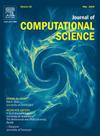A soft sensor open-source methodology for inexpensive monitoring of water quality: A case study of NO3− concentrations
IF 3.7
3区 计算机科学
Q2 COMPUTER SCIENCE, INTERDISCIPLINARY APPLICATIONS
引用次数: 0
Abstract
Nitrate (NO3−) concentrations in aquifers constitute a global problem affecting environmental integrity and public health. Unfortunately, deploying hardware sensors specifically for NO3− measurements can be expensive, thereby, limiting scalability. This research explores the integration of soft sensors with data streams through an use case to predict nitrate NO3− levels in real time. To achieve this objective, a methodology based on Kafka-ML is proposed, a framework designed to manage the pipeline of machine learning models using data streams. The study evaluates the effectiveness of this methodology by applying it to a real-world scenario, including the integration of low-cost sensor devices. Additionally, Kafka-ML is extended by integrating MQTT and other IoT data protocols. The methodology benefits include rapid development, enhanced control, and visualisation of soft sensors. By seamlessly integrating IoT and data analytics, the approach promotes the adoption of cost-effective solutions for managing NO3− pollution and improving sustainable water resource monitoring.
用于廉价监测水质的软传感器开源方法:NO3−浓度的案例研究
含水层中的硝酸盐(NO3−)浓度是一个影响环境完整性和公众健康的全球性问题。不幸的是,部署专门用于NO3−测量的硬件传感器可能很昂贵,因此限制了可扩展性。本研究通过用例探索了软传感器与数据流的集成,以实时预测硝酸盐NO3−水平。为了实现这一目标,提出了一种基于Kafka-ML的方法,这是一个旨在使用数据流管理机器学习模型管道的框架。该研究通过将该方法应用于实际场景(包括集成低成本传感器设备)来评估其有效性。此外,Kafka-ML通过集成MQTT和其他物联网数据协议进行扩展。该方法的优点包括快速开发、增强控制和软传感器的可视化。通过无缝集成物联网和数据分析,该方法促进采用具有成本效益的解决方案来管理NO3 -污染和改善可持续水资源监测。
本文章由计算机程序翻译,如有差异,请以英文原文为准。
求助全文
约1分钟内获得全文
求助全文
来源期刊

Journal of Computational Science
COMPUTER SCIENCE, INTERDISCIPLINARY APPLICATIONS-COMPUTER SCIENCE, THEORY & METHODS
CiteScore
5.50
自引率
3.00%
发文量
227
审稿时长
41 days
期刊介绍:
Computational Science is a rapidly growing multi- and interdisciplinary field that uses advanced computing and data analysis to understand and solve complex problems. It has reached a level of predictive capability that now firmly complements the traditional pillars of experimentation and theory.
The recent advances in experimental techniques such as detectors, on-line sensor networks and high-resolution imaging techniques, have opened up new windows into physical and biological processes at many levels of detail. The resulting data explosion allows for detailed data driven modeling and simulation.
This new discipline in science combines computational thinking, modern computational methods, devices and collateral technologies to address problems far beyond the scope of traditional numerical methods.
Computational science typically unifies three distinct elements:
• Modeling, Algorithms and Simulations (e.g. numerical and non-numerical, discrete and continuous);
• Software developed to solve science (e.g., biological, physical, and social), engineering, medicine, and humanities problems;
• Computer and information science that develops and optimizes the advanced system hardware, software, networking, and data management components (e.g. problem solving environments).
 求助内容:
求助内容: 应助结果提醒方式:
应助结果提醒方式:


